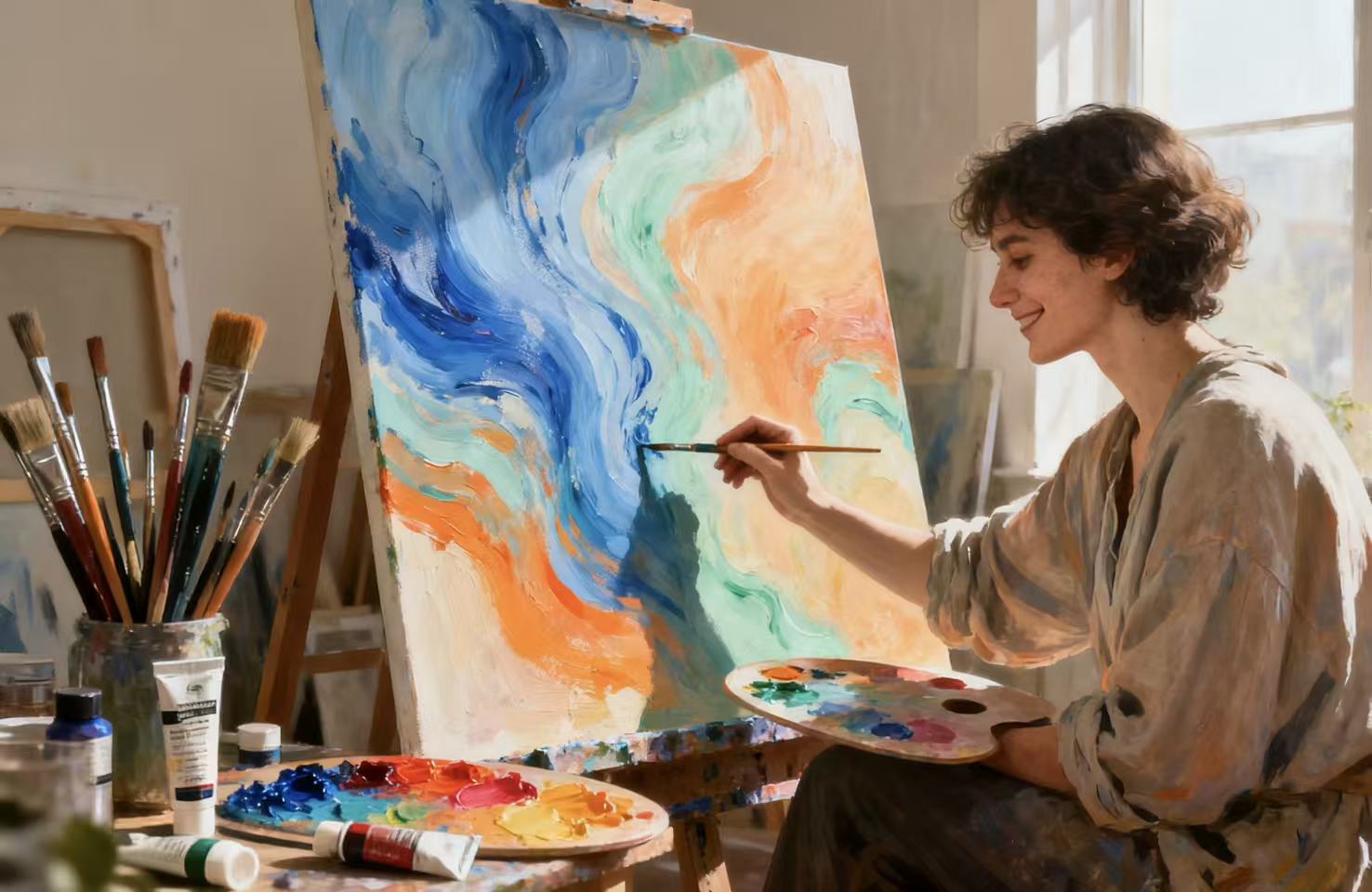Art Therapy

Reading Time: 2 minutes
Explore the subconscious through art mediums (painting, installation, digital creation, etc.) to
Summary:
Explore the subconscious through art mediums (painting, installation, digital creation, etc.) to
deepen self-awareness and identity; provide a safe outlet for emotions to help release repressed
feelings such as anxiety and trauma, and relieve psychological stress; promote interpersonal
interaction and collaboration, and cultivate empathy and social skills in group art therapy.
Materials needed:
pens、paper or ipad
steps:
1. Introduction and Mind Preparation (3 minutes) The therapist introduces the concept of art therapy in a gentle tone, clarifying the core of the activity: “There’s no need to pursue drawing skills; simply express your current emotions or feelings through colors and lines.” One or two examples of abstract art therapy works are shown, emphasizing: “There are no right or wrong answers, only authentic expression.” The therapist asks and guides the client to reflect on their current feelings: How are they feeling? Have they felt anxious or sad at times, and what specifically caused it?
2. Material Distribution and Brief Instructions (2 minutes) A4 drawing paper and drawing tools are distributed (optional: markers, colored pencils, oil pastels, etc., at least three colors; digital drawing can also be done using tools such as iPads). Quick Tip: “If you feel calm, try using soft lines; if you have repressed emotions, boldly use dark or thick lines, or simply fill the paper with blocks of color.” If the person being treated has the ability to create art, they can create freely; if they don’t, they can use AI tools to select contemporary artworks that represent them and remix them.
3. Free Creation and Immersive Expression (12 minutes) Play soft instrumental music (such as piano, natural white noise). The facilitator should not interfere with the process, but gently encourage those who are hesitant: “Follow your intuition; don’t worry about ‘how it looks’.” Avoid using judgmental language and ensure a quiet, relaxed creative environment.
4. Brief Sharing & Emotional Closing (3 minutes) Invite volunteers to share their work (share the content of their paintings, how they relate to things in their lives, whether their mood changed after painting, etc.). Summary: “Each piece of work is an outlet for your emotions—regardless of the content, it’s a meaningful dialogue with yourself.” Guide everyone to gently touch their work to touch their emotions.
Additional Tips
• Material Selection: Prioritize easy-to-use tools that don’t require complicated cleaning (avoid time-consuming and messy watercolors).
• Time Management: Set a 1-minute countdown reminder during the creation phase to prevent exceeding the time limit.
• Special Circumstances: Respect personal boundaries—never force someone to share if they are unwilling.
Art Therapy / Open Toolkits by s2864693 is licensed under a Creative Commons Attribution-NonCommercial-ShareAlike CC BY-NC-SA 4.0


